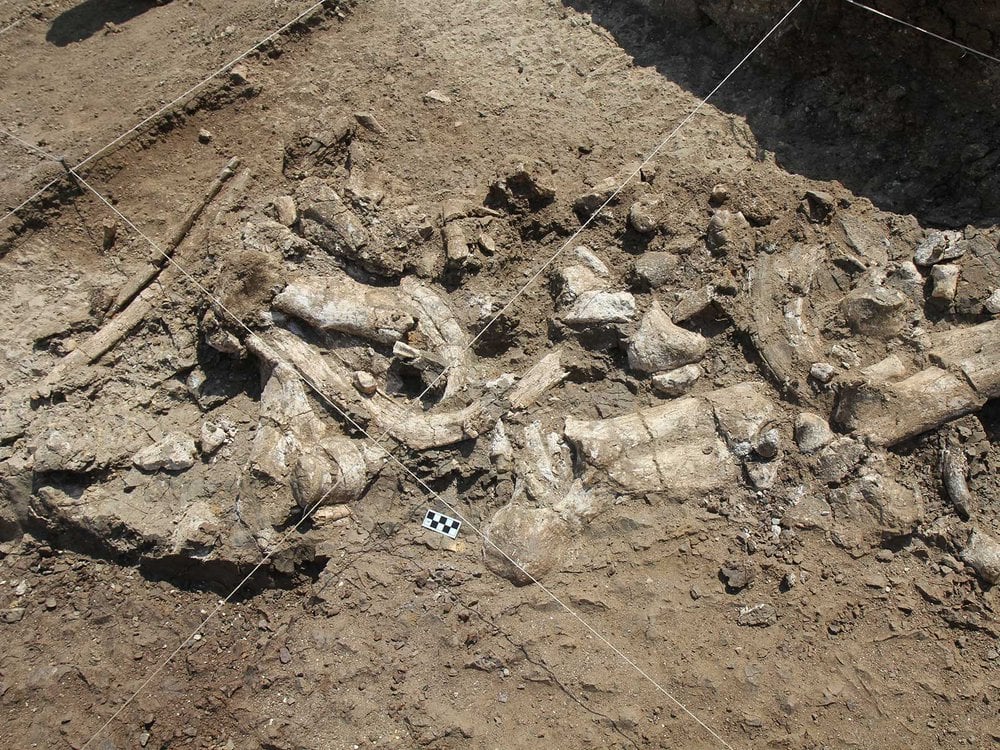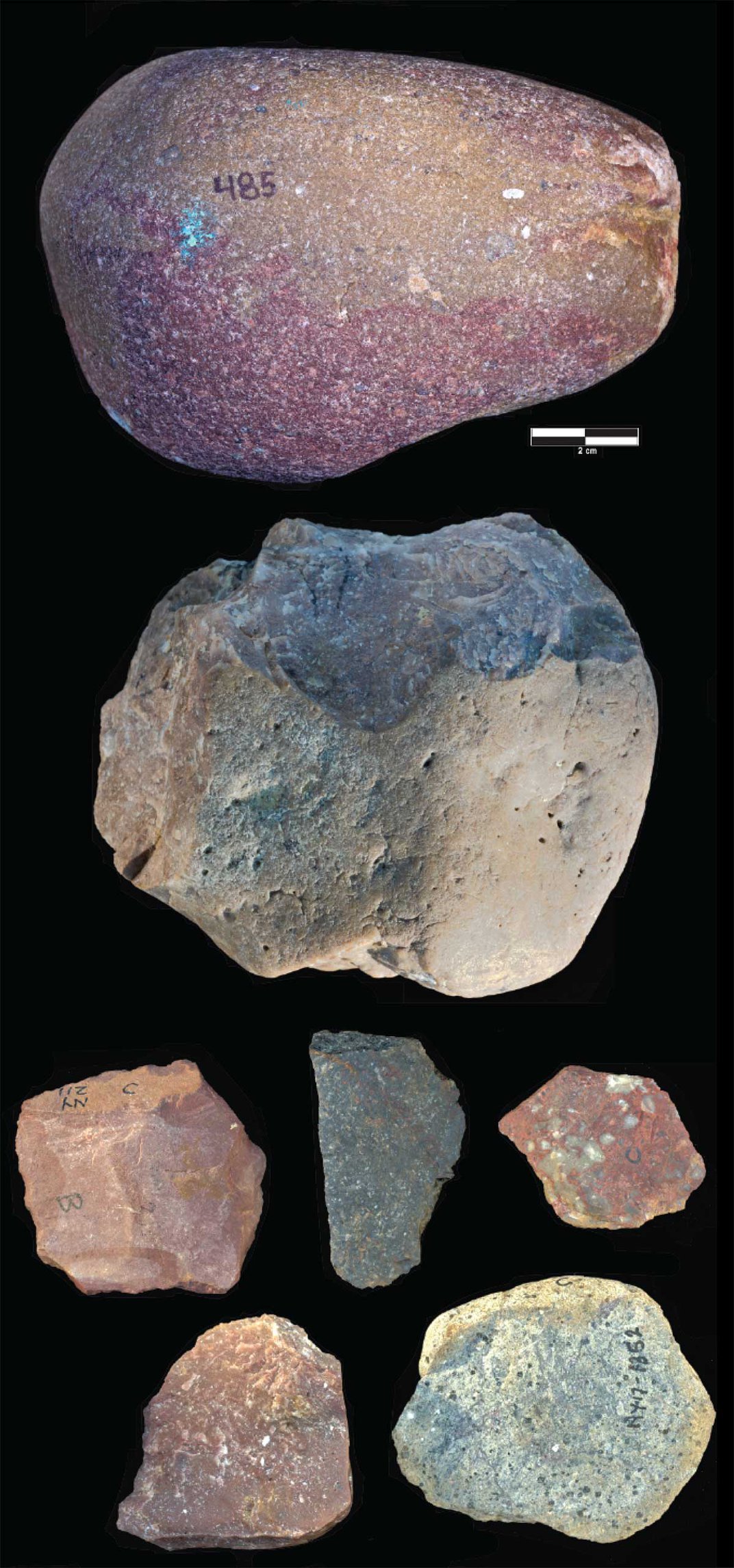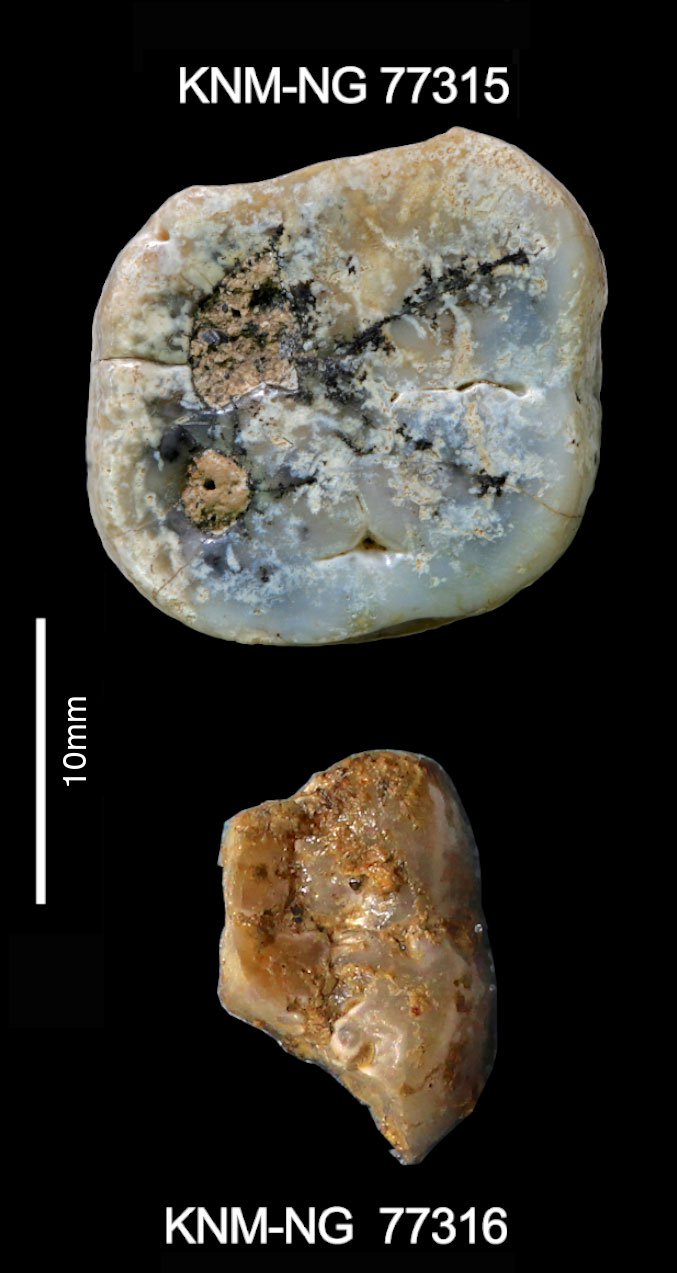Who Made the First Stone Tool Kits?
A nearly three-million-year-old butchering site packed with animal bones, stone implements and molars from our early ancestors reignites the debate

The dead hippo represented a stroke of luck to our early human ancestors. Three million years ago, such a huge animal promised an enormous amount of fat-rich food to the group living along the shores of Africa’s Lake Victoria. And the hungry crew knew exactly how to take advantage. Armed with a prehistoric stone tool kit they’d made by hand, they went to work on the beast. They likely cut meat from bone, broke those bones to consume the rich marrow within, and—since the site predates the regular use of fire by some two million years—may have sliced up and pounded the meat into a type of hippo tartare.
The recent discovery of the bones and tools left behind from this and another hippo butchering at Nyayanga, on Kenya’s Homa Peninsula, has altered our view of how human tool use evolved. Scientists, who described this site Thursday in Science, say the location is the earliest known example of Oldowan toolmaking—a groundbreaking leap in the sophistication of stone implements and the tasks for which they could be used. The site’s tools are 300,000 years older than the previously oldest known Oldowan example.
And two molars from the extinct hominin genus Paranthropus at the site present a mystery: Just who made and used these tools? The advanced Oldowan tool kit is typically associated with our own genus Homo, the ancestors of modern humans. But the find suggests that our big-toothed, smaller-brained Paranthropus cousins just might have crafted rocks for their use, or co-opted them from Homo contemporaries who also lived in East Africa during this key evolutionary period when the two lineages diverged.
“What we’re really talking about with the beginning of the Oldowan is the beginning of toolmaking as a regular behavior in human evolution,” says Smithsonian anthropologist Rick Potts, director of the Human Origins Program at the National Museum of Natural History. “We can finally say at this point in evolution that stone toolmaking becomes something that persists, spreads and proliferates.” Potts is a co-author of the study, which involved scientists from numerous institutions including the National Museums of Kenya.
Since 2015, excavations at Nyayanga, along the shores of Lake Victoria, have turned up 330 stone artifacts and 1,776 animal bones, according to the study. Microscopic studies of those bones showed the distinctive marks of cutting, scraping and pounding produced when stone tools are employed to butcher an animal. The bones of the two hippos, which were found near the tools once used to butcher them, are the oldest known evidence of hominins processing and eating such large animals.
The scientists also studied microscopic wear patterns on the ancient stone tools. They determined which types of strikes and blows produced the ancient wear by replicating them with a new set of stone implements.
Using those implements, the scientists cut, whacked and battered various kinds of plant material that would have been found in the area: soft passion fruits, pulpy and fibrous cassava, woody barks and roots, and underground tubers like yams. The signs of wear the re-enactors created while processing plants matched those found on the prehistoric tools, which suggests that the originals were used to serve up a diverse diet of animal and vegetarian fare. Whoever they were, these people likely consumed whatever came to hand, and that adaptability, aided by the tools, may have been key to their survival and their evolutionary journey.
It was crucial “to be able to crack open things like marrow bones, and use sharp flakes to cut meat off of bone, and peel tubers,” Potts explains. “You basically expand the menu.”
Nyayanga’s stone tools aren’t the oldest ever discovered. At a site called Lomekwi 3 on the western shore of Lake Turkana in northern Kenya, ancient hominins deliberately struck one stone against another to break off fragments some 3.3 million years ago. The older tools are bigger, cruder pieces of rock that indicate their less sophisticated origin. They may have been used in the same way that chimps use stones to crack open nuts.
Oldowan tools were produced systematically and with skills known as “freehand percussion.” They include three basic types: Hammerstones were used for pounding. Cores were struck with hammerstones to produce sharp flakes. And the sharp flakes themselves were likely used for cutting and scraping.

The oldest previously known samples of Oldowan tools were found in Ledi-Geraru, Ethiopia, and dated to about 2.6 million years ago. “What’s most amazing about this, I think, is the age of it,” says Jessica Thompson, a Yale University anthropologist who was a co-author of the discovery of the Oldowan tools from Ledi-Geraru and wasn’t part of the new study. “It’s quite remarkable that you have something this old that’s associated with Oldowan technology, that looks just like Oldowan technology that’s a million years younger.”
Thompson notes the new find pushes the Oldowan tools’ origins all the way back to the key period when the Homo and Paranthropus lineages first went their separate ways.
The technical revolution in Oldowan toolmaking served humans well for a very, very long time. Evidence of the tools is found from Africa to China. They remained in common use, and relatively the same, until a later technological leap ushered in the more sophisticated hand-axes of the Acheulean era some 1.7 million years ago.
Potts stresses that Africa was dynamic place during the long era of human evolution, and adaptability—like that afforded by stone toolmaking—was key to survival. “The idea of cognitively making a connection between a rock some distance away and the food that you want to process in a different place is a really cool cognitive leap,” he says. “There’s an investment by the early humans who are doing this ridiculous activity of picking up stone and lugging it some other place, at a cost, because it allows you to do a lot of things. That’s adaptability, which in my mind is the foundation of natural selection in human evolution.”
But who, exactly, were these first adaptable toolmakers? That question is difficult to answer. For decades, scientists generally believed that members of our genus, Homo, would have taken the cognitive leap to make tools—it was considered a key step on the journey to becoming modern humans. The 3.3-million-year-old Lomekwi 3 tools predate the oldest known Homo species, but they are rough and rudimentary compared to the Oldowan implements.
Paranthropus’ appearance here suggests the possibility that the cutting-edge tools could have been used by a more diverse group of ancient hominins. Stony Brook University anthropologist Jason Lewis says that at the sites his group studies in Kenya’s Turkana Basin, teeth and other evidence of Paranthropus are often found associated with Oldowan tools. This find extends that association 300,000 years further back in time, boosting the hypothesis that Paranthropus were making and using tools. But if they weren’t, Lewis notes, it shouldn’t be surprising to find the molars near what could also be Homo tools, as the two lineages coexisted during this transitional period in the African environment.

Common scientific thinking suggests that because Homo had small teeth, they turned to making tools to enhance their ability to process various foods. After all, Homo is the group that ultimately grew bigger brains and became the prehistoric world’s primary stone toolmaker. Paranthropus, on the other hand, used a different method to expand their diet. They developed big teeth and muscular jaws to grind tougher foods like nuts or roots into palatable forms. The two lineages look so different after their split, it seems unlikely that they occupied the same ecological niche. Of course, none of that precludes Paranthropus from also making tools.
Potts says this study shows that the leap in tool technology that helped Homo lineages adapt, survive and evolve into modern humans has an older origin and was spread more widely across Africa. But he knows that the appearance of those two outsized molars will cause some to debate just who got it all started.
“It’s weird how Paranthropus keeps rearing its head, or its teeth, wherever there is Oldowan technology,” Potts adds. “What in the world are these Paranthropus teeth doing at the site? We don’t know the answer, and that’s bound to reopen the question of who was the earliest toolmaker.”